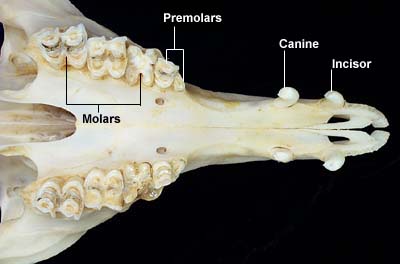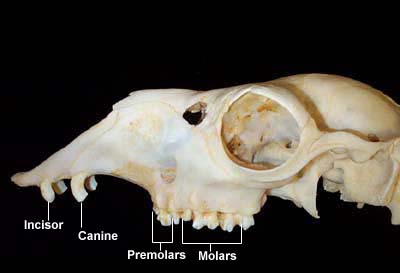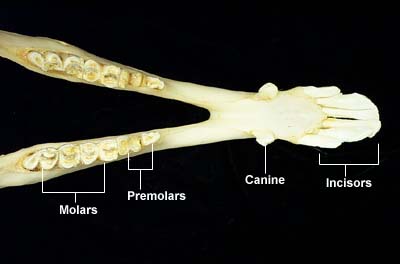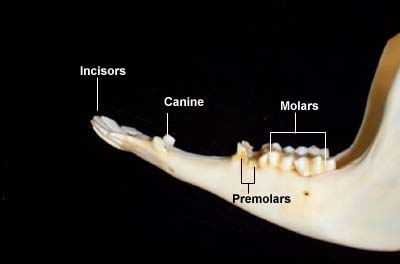VIVO Pathophysiology
Dental Anatomy of Llamas
|
Llamas are herbivores that are native to the Andes mountains of South America. They are one of a group of New World camelids that also includes the alpaca, vicuna and guanaco. In recent years, there has been a tremendous expansion in llama populations in North America, where they are kept as pets, used as pack animals, and provide wool for specialty markets. The digestive anatomy of llamas and other camelids is similar to ruminants such as cattle and sheep, but there are important differences. An interesting aspect of llama dentition is the presence of fighting teeth or fangs. These are modified canine and incisor teeth. There are two fighting teeth on the upper arcade and one on the lower. They erupt in males between 2 to 3 years of age, and in females at 4 to 5 years. Many veterinarians recommend removing the fighting teeth from males, because they can and do cause serious injuries to other males. |  |
| Dental Formulae | |||||
|---|---|---|---|---|---|
| Deciduous | 1 1 2 (3) 3 1 1 (2) |
= 9 (11) | Permanent | 1 1 1 (2) 3 3 1 1 (2) 3 |
= 14 (16) |
| Tooth Eruption | |
|---|---|
| Permanent | |
| Incisors | 2 - 4 years |
| Canine | 2 - 3.5 years |
| Premolars | 3.5 - 5 years |
| Molars | 6 months - 4 years |
| Maxillary Arcade The incisor and canine shown are the upper fighting teeth. |
 |
| Maxillary Arcade (Lateral view) |
 |
| Mandibular Arcade |  |
| Mandibular Arcade Lateral view |
 |
Author: Melissa Rouge
Send comments to Richard.Bowen@colostate.edu
